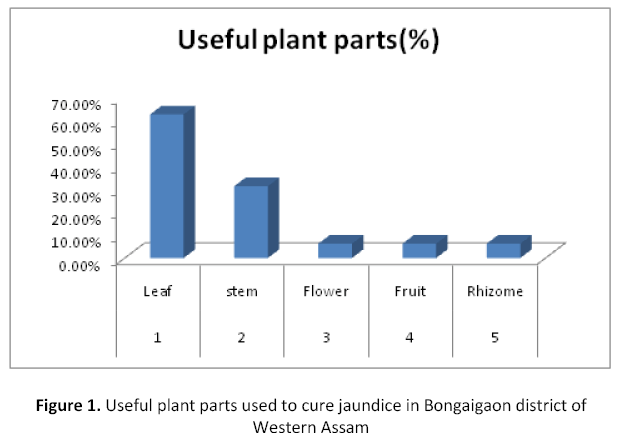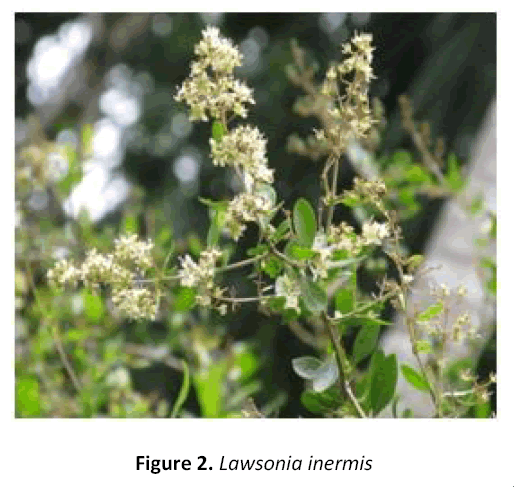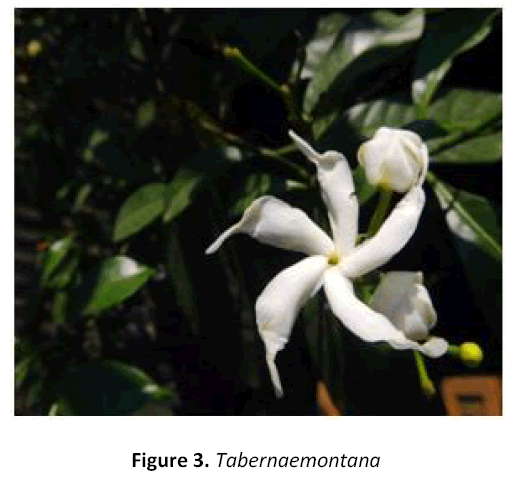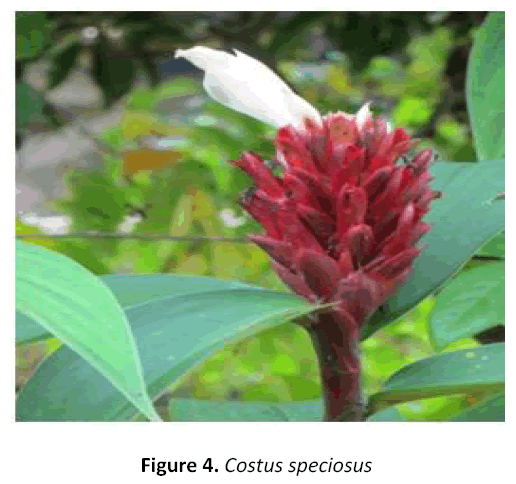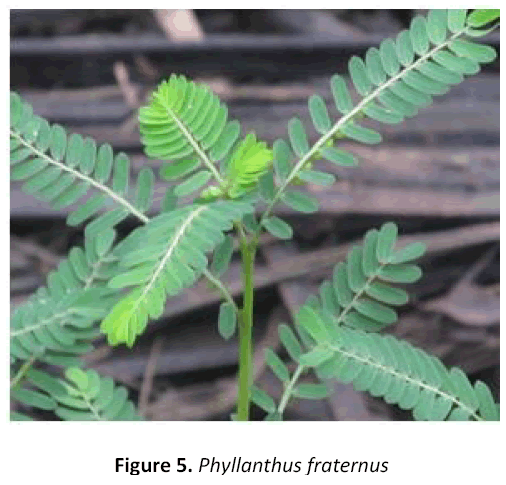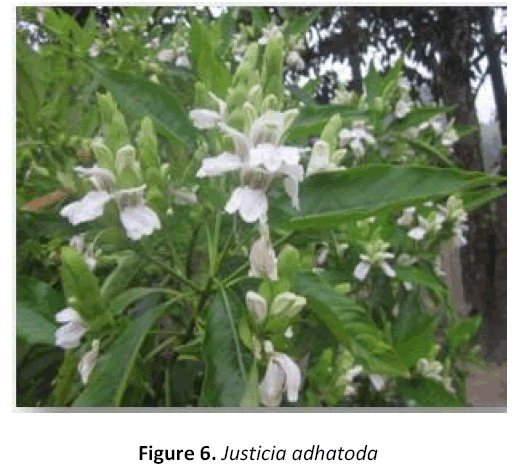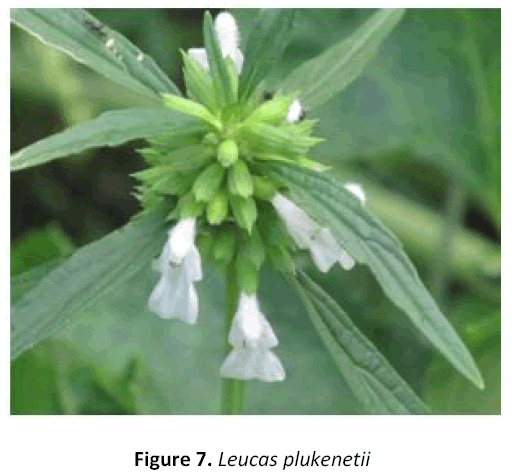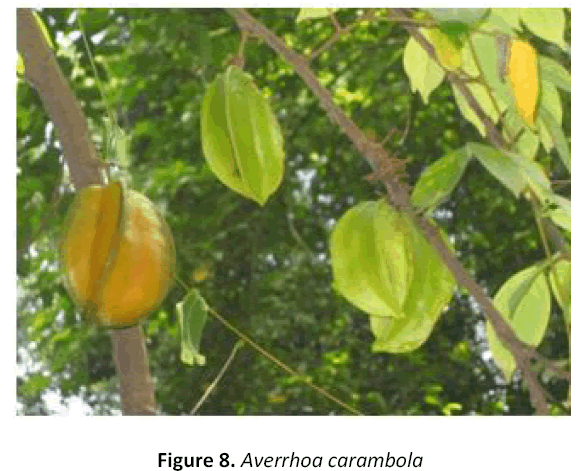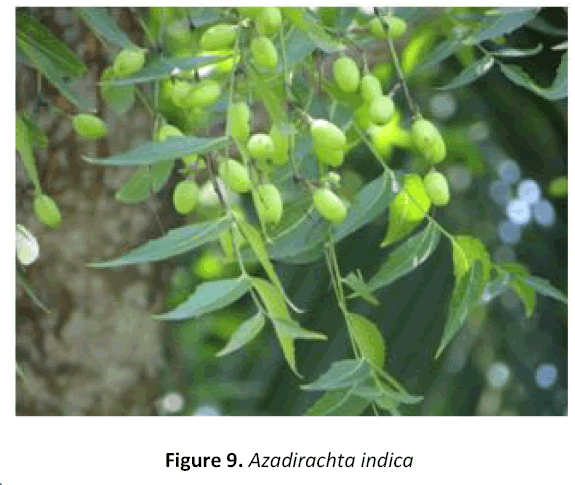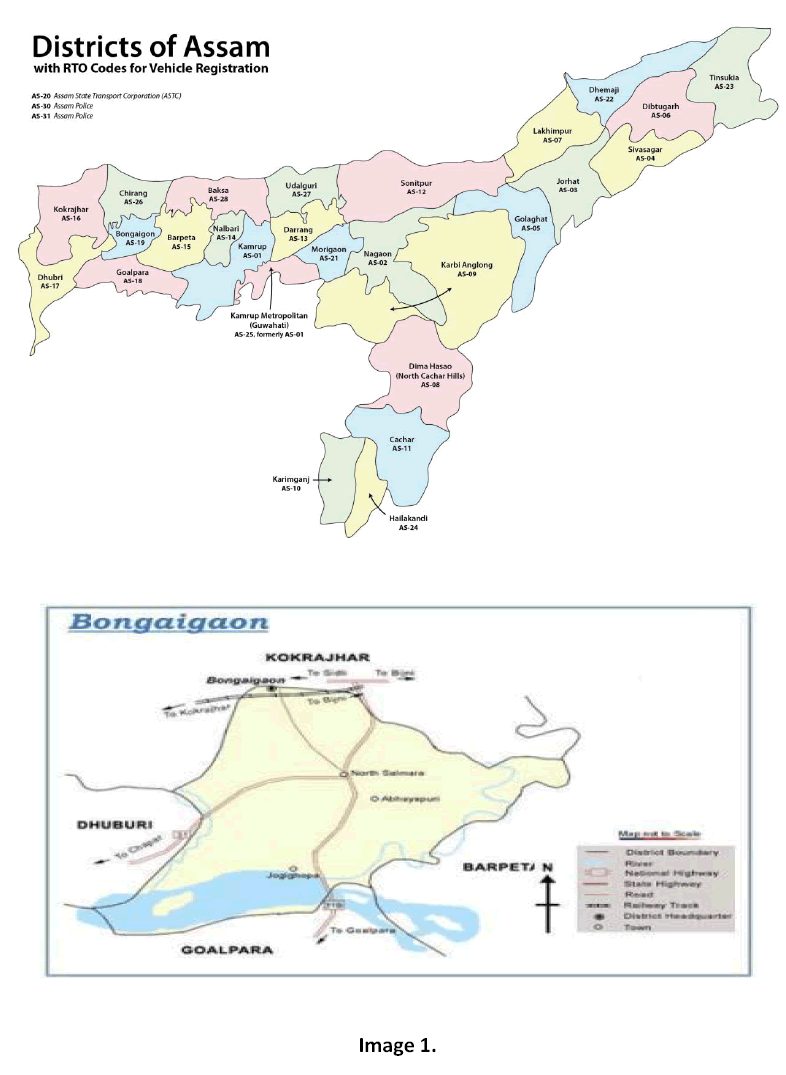ISSN : 2348-9502
American Journal of Ethnomedicine
Traditional Hepatoprotective Herbal Medicine of Bongaigaon District, Assam (N.E. India)
Department of Botany, Goalpara College, Goalpara-783101, Assam, India
Abstract
Background: Assam is known for its rich flora and diverse forests and vegetation due to its unique topography, climate and altitude patterns. In rural areas of Western Assam ethnic medicinal plants always play a key role in the healthy system among different ethnic tribes. The district is rich in diverse vegetation including medicinal plant species. Along with diversified groups of people the Koch Rajbanshi and the Bodo are two most dominant indigenous tribes of the district of Bongaigaon. The tribes belong to original culture, posses a good deal of information about properties and uses of primitive or medicinal plants. The practice of using indigenous plants for the treatment of various health ailments has been an old practice. But the ethnic tribes of this region still use several plants for their primary health problems, which are commonly found in this region.
Objectives: Present paper deals with use of certain indigenous medicinal plants among the ethnic tribes of Bongaigaon, a district of northern part of Western Assam for treatment of jaundice and liver disorder.
Method: Field survey was carried out during January 2012 to August 2014 in the entire Bongaigaon district of Western Assam to collect ethnobotanical information. A specially designed questionnaire was used to do a survey on the local health practices of the study area which will include most relevant questions that can give data to fulfil the objectives of the work. Questionnaire is thematic in nature. The questionnaire is a simple one and is having elicited simple answer. The information about ethno medicinal uses, local names of plants, plant parts used, formulation and preparation of recipes, dose regimen, duration and mode of administration were sought from local healers.
Result and conclusion: This paper provides information about 16 folklore medicinal plant species belong to 16 genera of 14 families of Bongaigaon district of Western part of Assam. There is immense use of various plants to cure Jaundice in the study area and these practices are transmitted from generation to generation as local health traditional practice.
Keywords
Jaundice, Ethno medicinal, Koch and Bodo, Bongaigaon district, Western Assam.
Introduction
Ethnobotany is a rapidly expanding science that deals with the direct traditional natural relationship between societies and plants. According to Schultes [10] ethnobotany as ‘the study of the relationships which exist between people of primitive society and their plant environment’. During the last few decades the concept, scope and nature of ethnobotany has been expanding at a very fast rate and gradually precisions are evolving [10,8]. About 80% of world population nearly depends upon traditional system of health system [11]. The art herbal healing is deep rooted in Indian culture. The indigenous traditional knowledge of medicinal plants of various ethnic communities, where it has been transmitted orally for centuries is fast disappearing from the face of the earth due to the advent of modern technology and transformation of traditional culture [5].
Jaundice is one of the commonest disease affecting both poor and developing countries citizens of Asia. Jaundice is caused due to high level of bilirubin in blood. Symptoms like yellowish skin and sclera, does not interested to take any food and ultimately felling become weakness of the body. The yellowish colour of skin and sclera is vary depend on level of bilirubin. When the bilirubin level become high then it tend to be brown.
In Assam the contribution in the field of ethnobotany has started since 1958 onward. Although several workers like Jain [6- 8]; Borthakur [2,3]; Boissya & Mojumdar [1] etc. have documented medicinal plants from various region of Assam, but no systematic investigation of folklore plants against jaundice among Bodo and koch Rajbanshi of Bongaigaon district is documented. So, present study is specially based to find out the specific ethnic plants to cure jaundice, which are use traditionally generation to generation.
MATERIAL AND METHODS
Frequent field trips were made to the different villages and markets situated in remote areas of Bongaigaon district during the period of 2012-2013. One kind of specially designed simple questionnaire was used at the time of data collection. Questionnaire was thematic in nature and would include most relevant questions. It contains local name, parts used, proportion used and also how many days and how many times the patents have to take the medicine all these aspects as far as possible. The folklore ethno botanical information’s were collected through personal interview of local healers, Sadhus, cowboy, plunge man, fish man, old aged women who are well experienced about traditional indigenous knowledge.
Tribal people of this region collect the herbal medicine from nearby areas like roadside, forest areas and sometime they have their own medicinal plant garden also. The healers use these plant items in their traditional method of treatment of jaundice. The information gathered was confirmed by different tribal people dwelling in different places of investigation. The fresh specimens were collected from the study area and identified them with the help of local flora and confirmed with the authentic specimens deposited herbarium of BSI (Shillong) and Central National Herbarium (Kolkata). The specimens were dried and made into herbarium specimens by following the standard herbarium method [9].
Study area
Bongaigaon district is situated in situated in the western part of Assam which is surrounded by the districts of Goalpara, Barpeta and Kokrajha. Koch rajbongshies and kocharies are original sons of the soil of this district which belongs to Indo- Mongaloid ethnic group. Rabhas, Garos, Kalitas, Kayastyhas and Assamese mushlims are also indigenous of this district who settled in this part of land prior to advent of British’s in North East Region (Bongaigaon district: development initiates 20001-2003). The northern side of the district is bounded by the Indo Bhutan International boundary and southern side by the river Brahmaputra. Temperature of this region varies from 13° to 36° C. The average rainfall is 250 to 350 cm.
RESULT AND DISCUSSION
A total of 16 species of medicinal plants distributed among 16 genera belonging to 14 families were being used for the treatment of jaundice by the tribal people of Bongaigaon district of Western Assam which are still hold in their mind. Data collected for this ethnobotanical survey was compiled in table-1, table-2, table-3, table-4, table-5 and table-6 which contain scientific name, family, vernacular name, parts used and proportion. Local names also include Bodo and Assamese (Ass) name. It was found that the family Apiaceae and Apocynace both are having two species which are used for hepato protective purpose. The other families like Euphorbiaceae, Lamiaceae, Caryophylaceae, Asteraceae, Gentianaceae, Acanthaceae, Papilionaceae, Meliaceae, Moraceae, Lythraceae, Zingiberaceae and Averrhoaceae each represented by one species only that are used in jaundice in Bongaigaon district. Among these the leaves were found to be most useful plant part consisting 62.52% of herbal preparation, 31.25% stem and which was followed by 6.25% of all the rhizome, flower and fruit.
The ethnic tribes of Western Assam mostly depend on ancient system of agriculture and natural plant resources for their day to day needs. They posses fairly a good knowledge about the use of plants they have acquired in the course of their centuries old experience and association of plants [4]. There is wide variation of Language from tribe to tribe within the study area. Most of the tribes are seen to have their own dialect. The tribal people of this region still strongly hold the traditional practices in their mind, which are come generation to generation. But presently one of the major problem is most of the plants are not found commonly because of deforestation or endemism. Therefore some of the practices are avoided or are not in practice or sometimes forgotten due to unavailability of plant specimen which were commonly found in past. Therefore they feel that it is very urgent to conserve such type of ethno medicinal plants. It was also observed that sometimes healers have own medicinal plant garden, which were collected by them from wild. In another way it can be said that while doing the healers or the local people play a very significant role in ex- situ conservation by gardening these types of plants in their home gardens.
Method of preparation
In this herbal preparation of jaundice all the plant ingredients are crushed and the extract is boiled with ½ litre of water, a pinch of salt is also added in this preparation. After cooling the liquid extract is allowed to take internally at the rate of 3 tablespoon thrice daily before food for 5 to 8 days continuously. In case of children or adolescence boys or girls the dosage 1-2 tablespoonful. The patient is advised to drink hot water after taking the medicine. The patients are strictly restricted not to take curd, spicy food, fish, meat, turmeric. Consumption of boiled food is very important as far as possible. (See table 1.)
Table 1.
| S. No. | Botanical name | Family | Vernicular name | Part(s) used | Proportion |
|---|---|---|---|---|---|
| 1 | Phyllanthus fraternus Webster | Euphorbiaceae | Bhui amlokhi, Mathi amlokhi (Ass, Koch) Bon babri (Bodo) | Leaf/stem | 50 gm |
| 2 | Hydrocotyle sibthorpioides Lamk | Apiaceae | Horu mani-muni (Ass) Manmuni (Koch) | Leaf | 50 gm |
| 3 | Centella asiatica (L.)Urban |
Apiaceae | Bor mani-muni (Ass) Dangar mamui (Koch) | Leaf | 50 gm |
| 4 | Leucas plukenetii (Roth) Spreng |
Lamiaceae | Dorun, Drunpuspa (Ass, Koch) Khangsingsa (Bodo) Sumkanjai (Rabha) |
Leaf | 15 gm |
| 5 | Drymaria cordata Willd |
Caryophyllaceae | Lijabori (Ass) Jabihari (Koch) Jabstree (Bodo) |
Leaf | 25 gm |
| 6 | Centipeda minima (L.)A. Br & Asch |
Asteraceae | Hasoti bon (Ass) | Leaf | 25 gm |
Mode of preparation
For preparing this medicine 3 plant ingredients are necessary i.e. 50 gm fresh leaves of all the three plants namely, Justicia adhatoda L, Cajanus cajan (L) Huth and Phyllanthus fraternus Webster (with tender stem). The Healer collects these plant materials from nearby forests. Then all the fresh green leafy materials are grinded and then make into tablets which are dried in sun. These readymade tablets are given to the patients suffering from jaundice. This is given at the rate of one tablet three times daily for continuously three days. In case of children ½ tablets is prescribed two times daily and for 5 to 7 days. The patients are strictly prohibited to take fish, chillies, spicy food and take sufficient rest as much as possible. (See table 2.)
Table 2.
| S. No. | Botanical name | Family | Vernicular name | Part (s) used |
Proportion |
|---|---|---|---|---|---|
| 1 | Justicia adhatoda L. | Acanthaceae | Boga bahok (Ass) Basoka tita (Koch) Basikho jola (Bodo) Bokai baskai (Rabha) |
Leaf | 50 gm |
| 2 | Cajanus cajan (L.) Huth |
Papilionaceae | Rohor dail, Ohor dali (Ass, Koch) Khokling (Bodo) |
Leaf | 50 gm |
| 3 | Phyllanthus fraternus Webster |
Euphorbiaceae | Bhui amlokhi, Mathi amlokhi (Ass, Koch) Bon babri (Bodo) |
Leaf/stem | 50 gm |
Mode of preparation
This herbal preparation is found to be very active against jaundice and people from various region of Assam including Jorhat, silchar also West Bengal are approach healers to treatment this serious disease. In this preparation of herbal medicine 100 gm stem of both Justicia adhatoda L and Azadirechta indica A. Juss., 50 gm stem of Plumeria acuminate Ait and 100 gm stem/leaf of Swertia chirayita (Roxb. Ex flaming) Karsten are crushed and boiled and preserved in a bottle. Two tablespoonful of this medicine is take daily after food for two times for five days. In case of children the prescribe dose is ½ tablespoon. (See table 3.)
Table 3.
| S. No. | Botanical name | Family | Vernicular name | Part (s) used | Proportion |
|---|---|---|---|---|---|
| 1 | Swertia chirayita (Roxb. Ex flaming) Karsten |
Gentianaceae | Cherata teta (Ass) Cherotata (Bodo) |
Stem/leaf | 100 gm |
| 2 | Plumeria acuminata Ait. | Apocynaceae | Gulance (Ass) Champa (Koch) |
Stem | 50 gm |
| 3 | Justicia adhatoda L. | Acanthaceae | Boga bahok (Ass) Basoka tita (Koch) Basikho jola (Bodo) Bokai baskai (Rabha) |
Stem | 100 gm |
| 4 | Azadirechta indica A. Juss. | Meliaceae | Mohanim (Ass) | Stem | 100 gm |
Mode of preparation
This preparation was collected from a very old Bodo man and was commonly prescribed by him at that region of Bongaigaon. In this herbal medicine firstly 9 no. leaf of Ficus lepidosa Wall and 9 no. petal of Tabernaemontana divaricata (L.) R. Br. is paste with the help of mortar and is mixed carefully 100ml juice of Averrhoa carambola L. 100 ml milk of goat is also added in this mixture. ½ cup of this mixture is prescribed thrice daily for 4 to 7 days after food. For children or adolescence boys/girls the herbal medicine is two table spoonfuls twice daily. The patients are advice not to take spicy food items, meat, fishes like Swamp barb, Hilsa, all kind of fatty fishes.
It was said by the healers that the disease is due to consumption of polluted water and patients are advice not to hard work and they are rest as much as possible. (See table 4.)
Table 4.
| S. No. | Scientific name | Family | Vernicular name | Part (s) used | Proportion |
|---|---|---|---|---|---|
| 1 | Ficus lepidosa Wall | Moraceae | Demaru (Ass) Dimbaru (Koch) Aadumbra (Bodo) | Young leaf | 9 no. |
| 2 | Tabernaemontana divaricata (L.) R. Br. |
Apocynaceae | Kothona Phul (Ass) Dawdai (Bodo) |
Petal of flower |
9 no. |
| 3 | Averrhoa carambola L. | Averrhoaceae | Kordoi (Ass) Kodde tanga (Koch) Khamranga (Bodo) | Fruit juice | 100 ml |
Mode of preparation
In this preparation of ethno medicine bark of Lawsonia inermis L. or Henna plant is required which is commonly found all over India. The bark of this Henna plant are collected and crushed into paste and boiled with ½ litre of water. One pinch of salt is also added in this mixture. ½ cup of this liquid preparation is prescribed twice daily continuously for seven days. In case of children the amount of medicine is 3 tablespoon only twice daily. (See table 5.)
Table 5.
| S. No. | Scientific name | Family | Local name | Part (s) used | Proportion |
|---|---|---|---|---|---|
| 1 | Lawsonia inermis L. | Lythraceae | Jatuka (Ass) Jitka (Koch) | Bark | 100 gm |
Mode of preparation
In this herbal preparation rhizome of Costus speciosus is required. Here 100 gm matured rhizome of Costus speciosus plant are washed cleanly. The rhizomes are grinded and juice is extracted. The juice of the rhizome then mixed with equal amount of cow milk. ½ cup of this preparation is prescribe twice daily for 3 days only. The amount of medicine is less in case of baby. This medicine was found to be very effective in a Koch inhabitant village. The healer adviced not to take fumitories and masticatories and some vegetables like pumpkin, arum, ash gourd etc., meat and fish, egg. (See table 6.)
Table 6.
| S. No. | Scientific name | Family | Local name | Part (s) used | Proportion |
|---|---|---|---|---|---|
| Jomlakhuti (Ass) Devi | |||||
| 1 | Costus speciosus (J.Konig) C. Specht |
Zingiberaceae | tokon (Koch) Burhi thokhon (Bodo) |
Rhizome | 100 gm |
| Kokrefung (Rabha) |
CONCLUSION
The present investigation revealed that the study area is rich in plant resources including medicinal plant species. These are often used by the local tribes from generation to generation for their primary healthcare. They have their own health related concept. The people have their own diagnostic tools and techniques and traditional knowledge. This ethno-medicinal data may provide a base to start the new chemical related to photochemistry and pharmacology.
ACKNOWLEDGMENT
We are thankful to the provider of the Traditional Knowledge that is the healers of Bongaigaon district for providing us the required data in local language.
REFERENCES
- Baissya CL, Majumdar. Some folklore claims from the Brahmaputra valley of (Assam), Ethnomedicine; 1980; 139-144.
- Borthakur SK. Less known medicinal use of plants among the tribes of Karbi Anglong (Mikir Hills), Assam. Bull. Bot. Survy. India; 1976a; 18(1-4):166-171.
- Borthakur SK. Certain plants in folklore and folk life of Karbi (Mikir) of Assam. In: S.K.
- Jain Contribution to Indian Ethnobotany (3rd ed 1997), opp. 1981a; 169-178.
- Borthakur SK, Goswami. Herbal remedies of the Nepalese of Assam Fitoterapia. 1995; 67 (3) 231.
- Ganesan S. Ethnomedicinal survey of lower Palmi Hills of Tamilnadu. Indian Journal of Traditional Knowledge 2004; (3): 299-30.
- Jain SK. Tribal Studies in Indian Ethnobotany: less known uses of fifty common plants from the Madhya Pradesh Bull. Bot. Surv. India. 1963 a, 5:223-26.
- Jain SK. The Role of a Botanist in folk-lore research, Folklore 1964 b; 5:145-150.
- Jain SK. Ethnobotany: Its scope and study
- Bull Indian mus. 1967c; 2 (10):34-39.
- Jain, S. K. & Rao R. R. (1997). A Handbook of Field and Herbarium Methods. Today & Tomorrow’s Printers and Publishers, New Delhi.
- Schultes RE. The lore of the Ethno botanist in search for new medicinal plants. Lloydia 1962; 25: 257-366.
- Rajudurai M. Ethnomedicinal plants used by the traditional healers of Pachamalai Hills, Tamilnadu, India. Ethno-med. 2009; 3(1): 39-41.
Open Access Journals
- Aquaculture & Veterinary Science
- Chemistry & Chemical Sciences
- Clinical Sciences
- Engineering
- General Science
- Genetics & Molecular Biology
- Health Care & Nursing
- Immunology & Microbiology
- Materials Science
- Mathematics & Physics
- Medical Sciences
- Neurology & Psychiatry
- Oncology & Cancer Science
- Pharmaceutical Sciences
